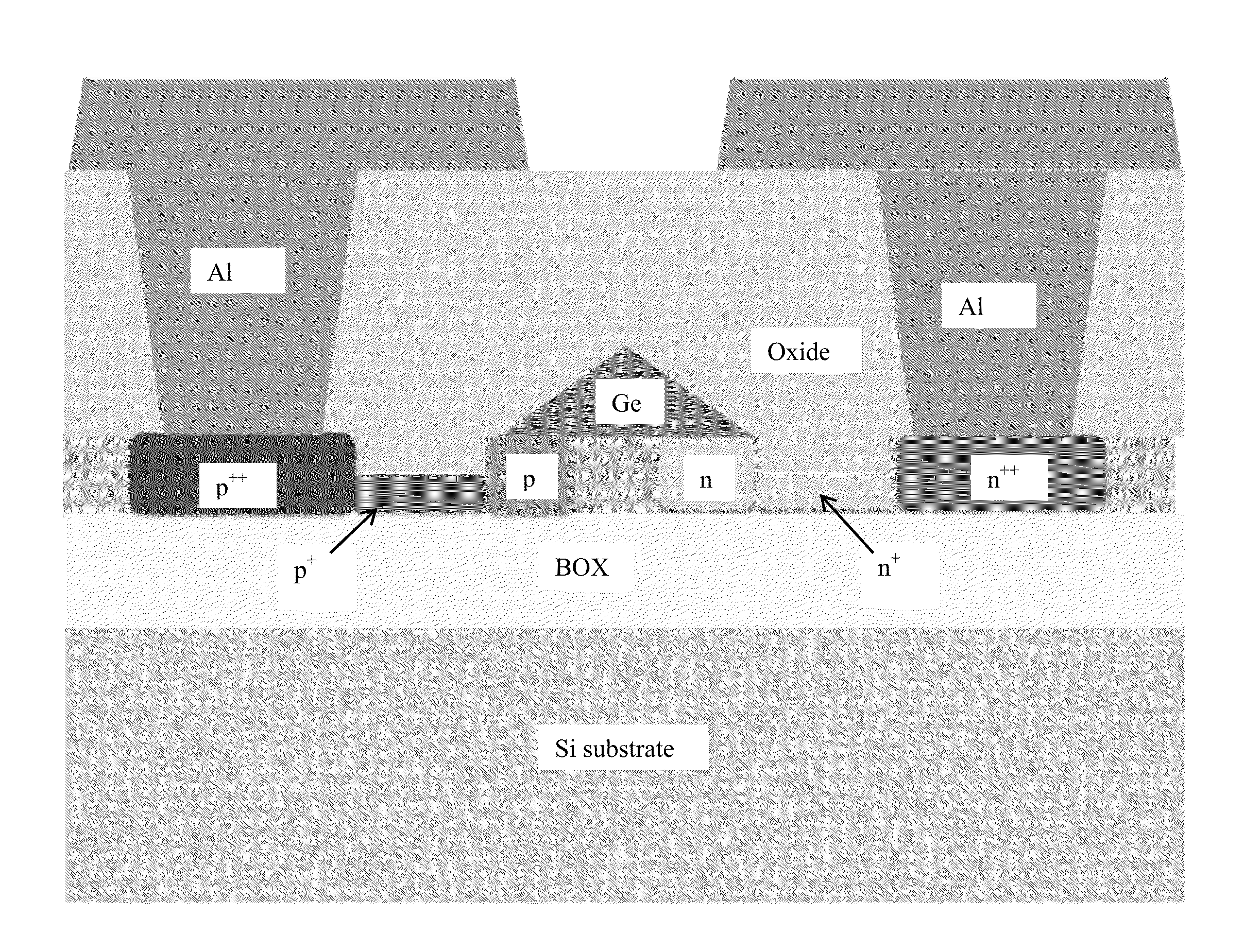Germanium metal-contact-free near-IR photodetector
a metal contact-free, near-ir technology, applied in the field ofgermanium photodetectors, can solve the problems of link power budget constraints, on-chip coupling loss is usually quite high, and on-chip devices tend to be lossy as well, so as to achieve greater measurement quantum efficiency, measured quantum efficiency, and measured quantum efficiency
- Summary
- Abstract
- Description
- Claims
- Application Information
AI Technical Summary
Benefits of technology
Problems solved by technology
Method used
Image
Examples
Embodiment Construction
[0048]We describe a novel floating germanium photodetector that significantly simplifies Ge-on-Si detector fabrication process by eliminating the need to dope and contact germanium. The epitaxial Ge is not deliberately doped. It keeps germanium intact from damage and preserves the crystal quality after epitaxy. The device was measured to have responsivity of 1.24 A / W at 1550 nm wavelength, corresponding to 99.2% quantum efficiency. To the best of our knowledge, this is the highest responsivity reported for p-i-n germanium detectors. At −4V reverse bias, dark current is only 40 nA. The measured 3-dB bandwidth is 30 GHz and capacitance is 8 fF. The detector functions for optical radiation with free-space wavelengths from 1280-1600 nm.
[0049]The detector geometry allows the optical radiation to be is coupled predominantly into a single mode within the combined Ge / silicon detector geometry, thus maximizing the chance for absorption. It is believed that the optical mode is prevented from ...
PUM
 Login to View More
Login to View More Abstract
Description
Claims
Application Information
 Login to View More
Login to View More - R&D
- Intellectual Property
- Life Sciences
- Materials
- Tech Scout
- Unparalleled Data Quality
- Higher Quality Content
- 60% Fewer Hallucinations
Browse by: Latest US Patents, China's latest patents, Technical Efficacy Thesaurus, Application Domain, Technology Topic, Popular Technical Reports.
© 2025 PatSnap. All rights reserved.Legal|Privacy policy|Modern Slavery Act Transparency Statement|Sitemap|About US| Contact US: help@patsnap.com



